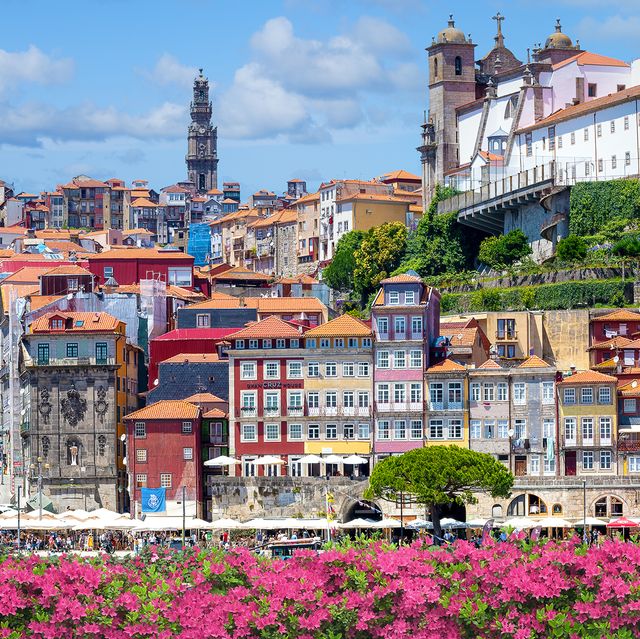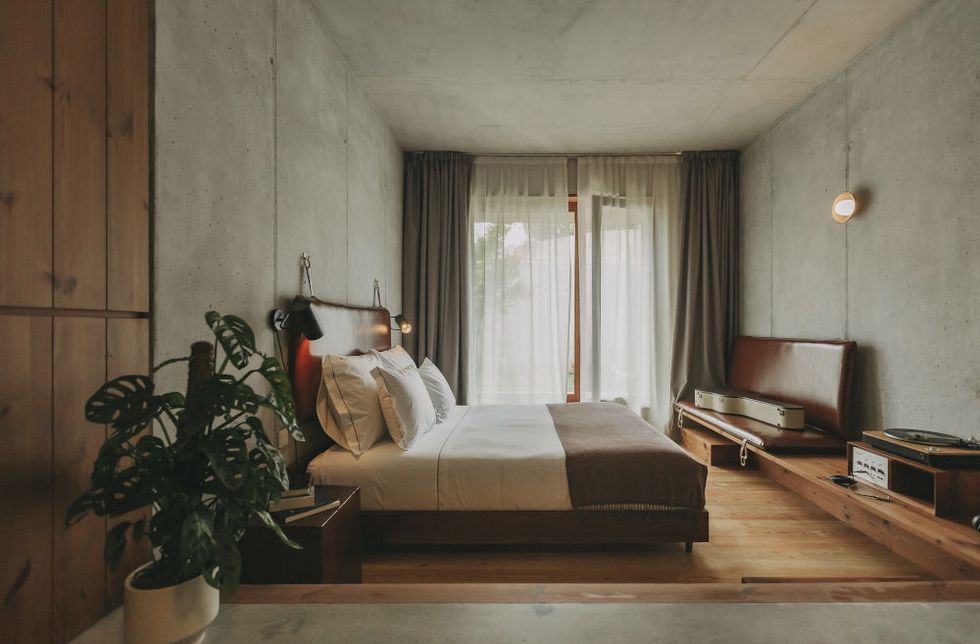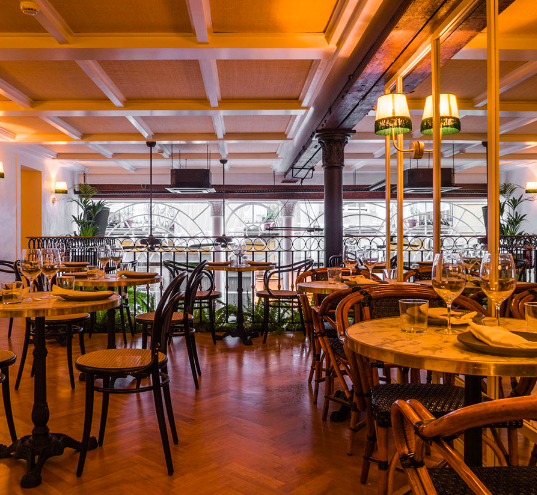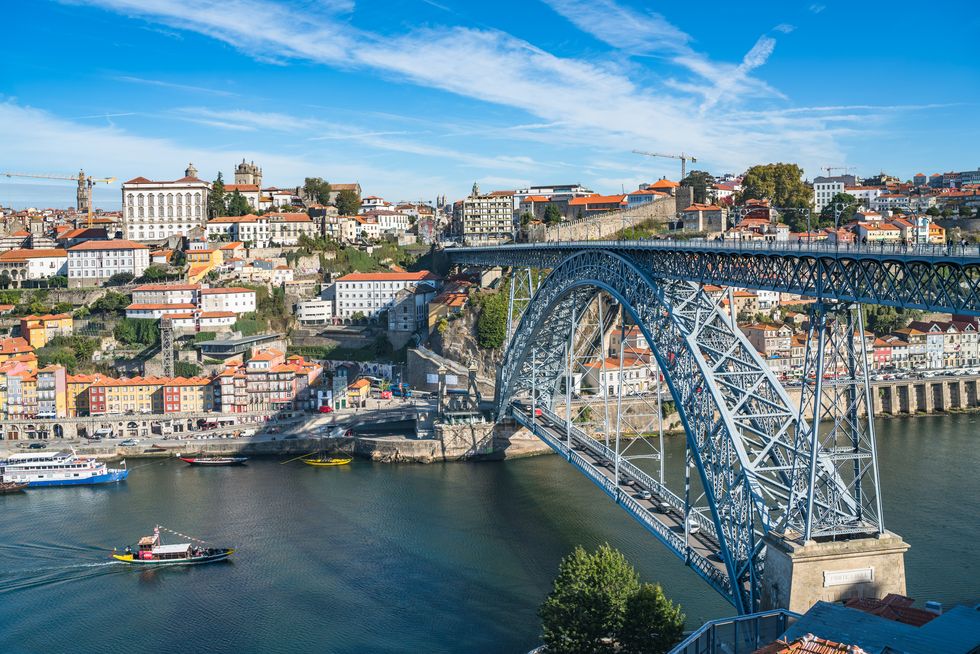If your idea of a holiday is non-stop sightseeing and a Fitbit that clocks 30,000 steps in a sprawling metropolis, then Porto is not for you. It is small, close-knit and steady. Those are perhaps its biggest draws. Because this northern coastal city (the second largest in Portugal after the capital Lisbon) is one long, gloriously languid vibe; a relaxing city break that genuinely feels nourishing.
Rushing around just isn't the Porto way. Instead, wander aimlessly down the narrow streets of crumbling yet colourful Pombaline architecture. Visit the port (yes, Porto has ports!) and drink vinho verde in the shadow of the hulking Dom Luís I Bridge. Sunbathe. Eat. Drink more vinho verde. And port (yes, Porto birthed port!). Pop into cathedrals, the railway station, that shop with the weird magnets, and do it all at your own leisure.
The timing couldn't be better. Climatically, yes, for September is on the cooler end of Porto's blazing summer, but still warm enough for shorts and T-shirts. But also because the city is on the cusp of a new culinary and creative movement that's given rise to genuinely impressive restaurants, galleries and concept stores. Given the Portuguese government's attractive perks for international start-ups, that'll only get bigger.
So get there before it does – and keep our 72 hour guide bookmarked.
Where to Stay
Given Porto's tiny city centre, space is at a premium. So if you are to elect for one of the many hotels in the Baixa area, know that you'll get a comfortable, if not slightly small, room. But Porto's size also makes it absurdly traversable. Just a ten minute Metro ride west lies Bonfim, a neighbourhood that feels like the real Porto, and one where Mouco has opened shop.
At just over a year old, the hotel (stylised as M.Ou.Co) is big into music: a dedicated listening lounge, complete with a comprehensive vinyl collection, sits just off the main lobby, and each room is equipped with an impressive record player. But it's also a design destination. The former warehouse is a sanctuary of poured concrete, teak wood and natural light: a members' club feel, but thankfully without members' club pretensions. Factor in a well-stocked bar, a small but formidable menu and an impressive pool area, and Mouco is the perfect retreat for a lazy Porto weekend.
Mouco, R. de Frei Heitor Pinto 65, double rooms with breakfast starting at around £80 per night
Where to Eat
Gluttons, rejoice: Porto has a wealth of cafes and restaurants that cover all manner of food. For traditional local pastries, Padaria Ribeiro by the Aliados Metro station is a good balance between old and new, whereas good pastel de nata (those banging little Portuguese custard tarts everyone loves) can be found in almost every bakery in almost every neighbourhood. For a more modern breakfast though, try Garden just south of the Trindade Metro station, and ask for the brunch burrito (and get there early).
Dinnertime is where Porto really show offs, though. Tia Tia (again, by Aliados station) has been headed up by wife-husband team Tiago Feio and Cátia Roldão since November 2021, and they offer a tightly-curated, daily menu that plays to the bountiful seasons of Porto's harvest – with a slightly modern twist. Think pak choi in cashew cream, carrot, tangerine and Swiss chard salad and Shoyuzuke egg yolk on a bed of turnip and asparagus. All the wines are natural, too, which is quite trendy, really.
For more traditional upmarket dining, head to Mistu. Using the Atlantic on the doorstep to springboard to other parts of the world, an impressive menu under chef Rui Mingatos serves fresh seafood, steak and oysters alongside a comprehensive wine list. The restaurant itself is also steeped in olde Europe charm with tiled floors, spinning overhead fans and jazz lounge chairs.
What To See
Porto isn't quite Lisbon in terms of landmarks, but some of the most enjoyable afternoons to be had in the city are the unplanned ones. Walking from neighbourhood to neighbourhood gives the clearest vision of Porto (and the most tiring one – lots and lots of steps) with attractions seemingly peppered in-between the winding streets and arcades.
Chief among these is the São Bento train station. A far cry from Doncaster interchange, this impressive 20th century building is emblematic of Neo-Manueline architecture, and houses some of the best mosaic work in Portugal using over 20,000 azulejo tiles.
Just a stone's throw away is Porto Cathedral, a towering church and a lynchpin of Romanesque architecture, the gilded halls are a shining example of Portugal's rich history of European and Moorish influence.
But no trip would be complete without a glass of port. Head to the Gaia neighbourhood, the cradle of the national fortified wine, and grab a glass at Kopke. It's the oldest port house in the city, and the queues can attest to its expertise.
















